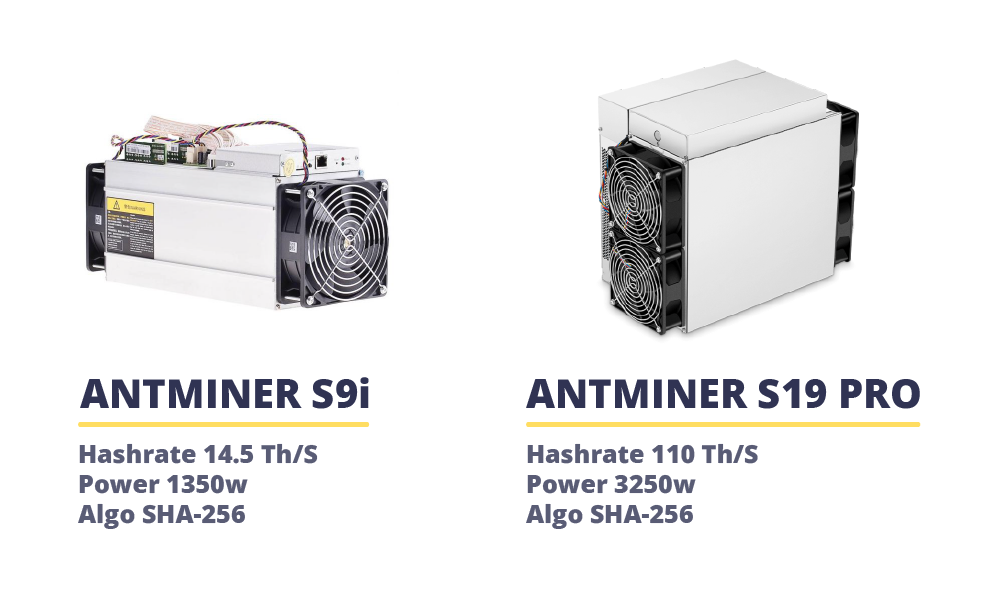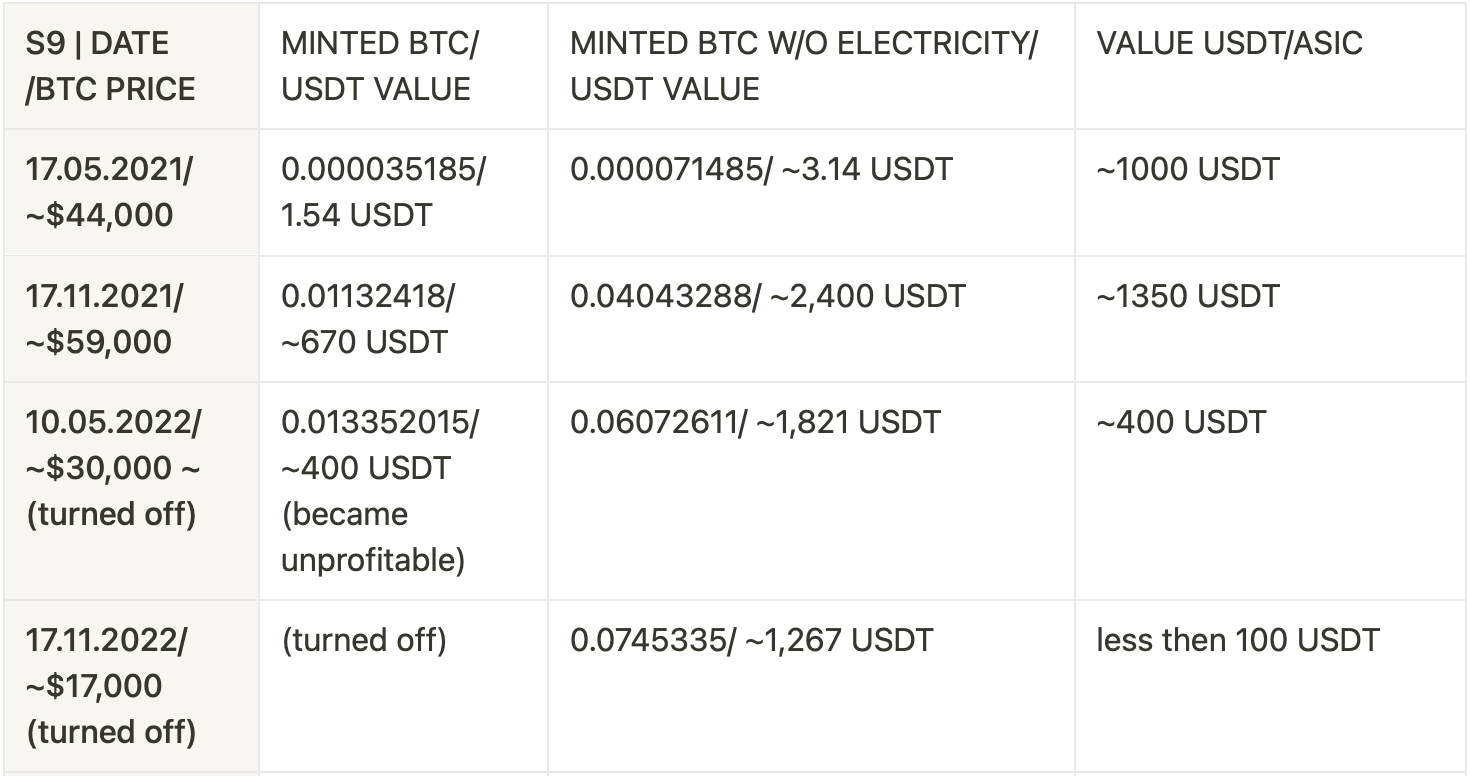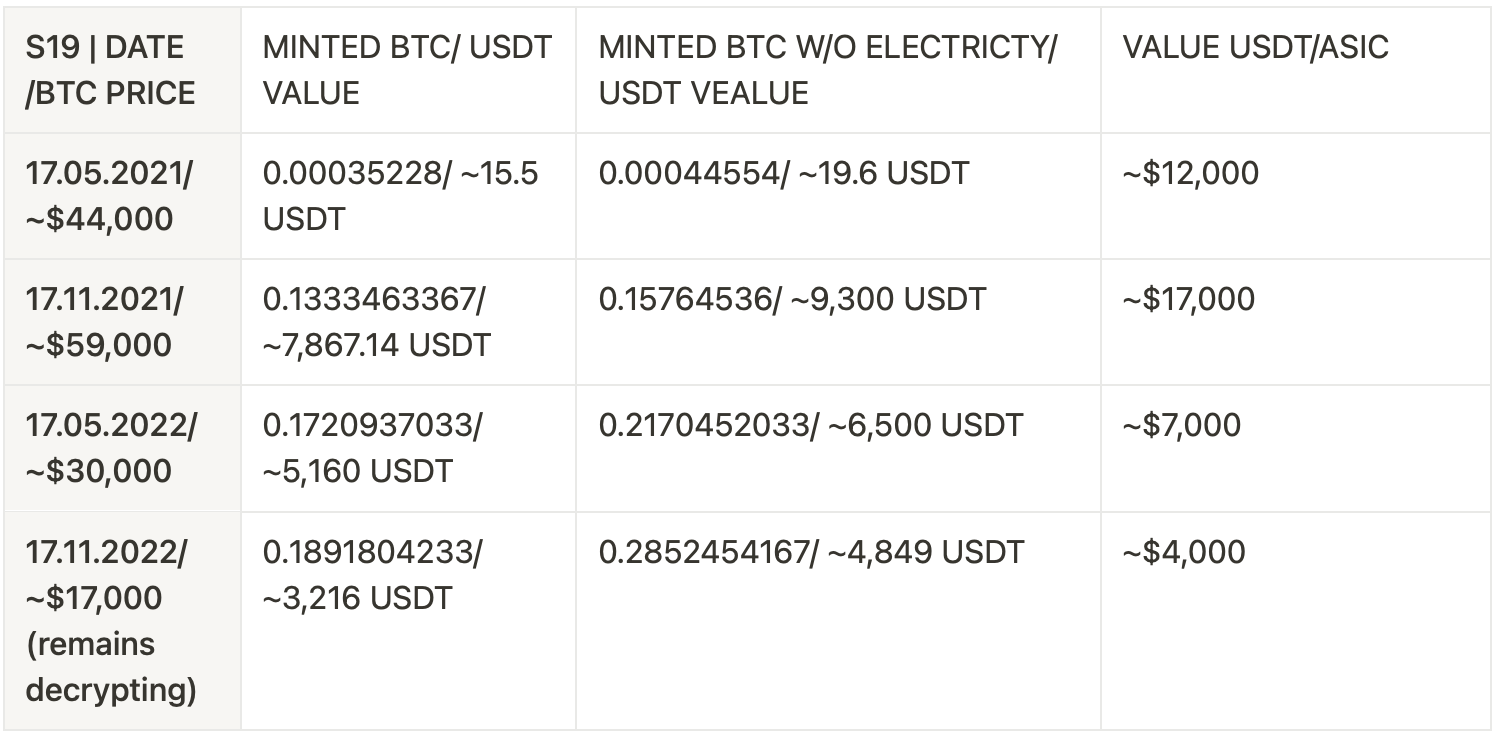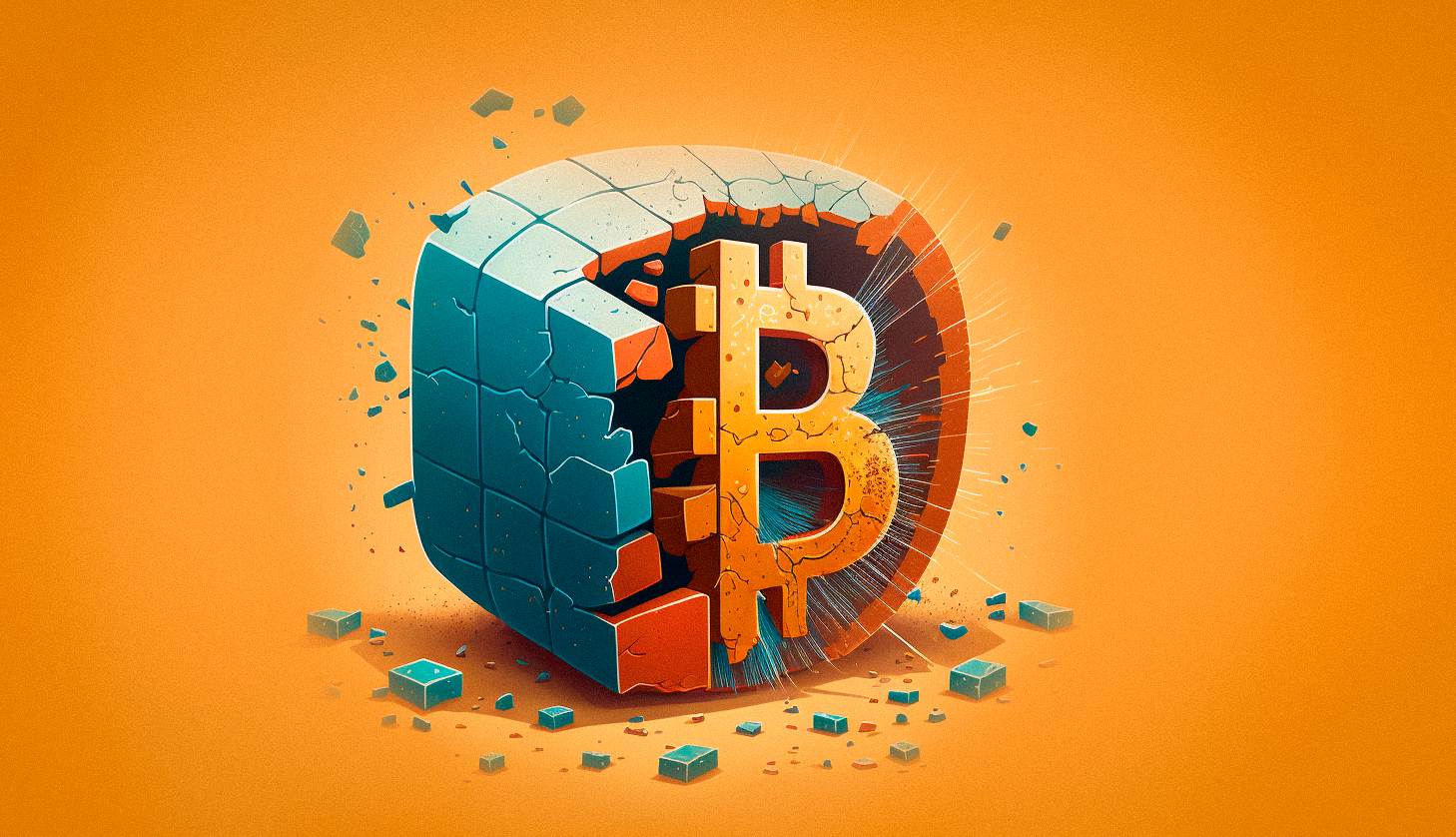Good morning, BeMiners!
The ideal time to evaluate and modify a trading strategy is during a bear market. The vast majority of data centers around the globe are consistently mining in the negative. The pressure on miners is still present right now, but we can finally observe the response: the first cryptocurrency’s network difficulty has started to normalize.
The ideal time to evaluate and modify a trading strategy is during a bear market. The vast majority of data centers around the globe are consistently mining in the negative. The pressure on miners is still present right now, but we can finally observe the response: the first cryptocurrency’s network difficulty has started to normalize.

This movement could mean one thing - people are shutting down their equipment all over the world, unable to withstand the crypto-winter. What's to be surprised about? Ethereum's transition to POS, the collapse of NFT and the outflow of capital from DEXes - you can't look at it without tears, so there is a gloomy emotional background among enthusiasts at times.
For the more stubborn experts, we have prepared an interesting historical summary of the cost of hardware and its production over the past two years.
As interest in the crypto market has risen, investors have made various decisions, including their choice of mining equipment model. Our experience tells us that in the line of SHA256 miners, the most popular models among users in the last bull cycle were
"Granddaddy" - Antminer S9i and - "grandson" Antminer S19PRO.
For the more stubborn experts, we have prepared an interesting historical summary of the cost of hardware and its production over the past two years.
As interest in the crypto market has risen, investors have made various decisions, including their choice of mining equipment model. Our experience tells us that in the line of SHA256 miners, the most popular models among users in the last bull cycle were
"Granddaddy" - Antminer S9i and - "grandson" Antminer S19PRO.

The Antminer S19PRO and the Antminer S9i are both bitcoin mining rigs made by Bitmain, but they are quite different in terms of their specifications and performance. Here is a comparison of some of the key differences between the two:
To compare the profitability of the Antminer S19PRO and S9i, we would need to know the specific conditions they were operating under, such as the value of Bitcoin, the cost of electricity, and the difficulty of mining.
At first glance, everything is obvious - the energy efficiency of the S19 is an advantage over the obsolete S9i. Is it all so simple?
For clarity, we propose to study 2 client cases on the above mentioned machines. The clients start mining with insignificant difference from May 17, 2021 - S19 is launched later. Maintenance and mining correspond to the historical data of BeMine. For clarity, fund withdrawals are not included in the tables. ASIC prices at the time could change quickly and significantly. Buying a "turnkey service"-with a hardware warranty from the manufacturer and a customs declaration-could pay anywhere from $800 to $1,200 for the S9i. Under similar circumstances, the S19 would have cost between $9,000 and $15,000. Below are the yield tables for these models of equipment
- Hash rate: The S19PRO has a hash rate of 110 TH/s, while the S9i has a hash rate of 14 TH/s. This means the S19PRO is much faster and more powerful than the S9i.
- Efficiency: The S19PRO has an efficiency of 32.5 J/TH, while the S9i has an efficiency of about 90 J/TH. This means the S19PRO is much more energy efficient than the S9i.
- Price: The S19PRO is more expensive than the S9i.
- Noise: The S19PRO is quieter than the S9i. The S19PRO has a noise level of 72 dB, while the S9i has a noise level of about 75 dB.
- Size: The S19PRO is larger than the S9i. It measures 320 mm x 125 mm x 187 mm, while the S9i measures 298 mm x 137 mm x 190 mm.
To compare the profitability of the Antminer S19PRO and S9i, we would need to know the specific conditions they were operating under, such as the value of Bitcoin, the cost of electricity, and the difficulty of mining.
At first glance, everything is obvious - the energy efficiency of the S19 is an advantage over the obsolete S9i. Is it all so simple?
For clarity, we propose to study 2 client cases on the above mentioned machines. The clients start mining with insignificant difference from May 17, 2021 - S19 is launched later. Maintenance and mining correspond to the historical data of BeMine. For clarity, fund withdrawals are not included in the tables. ASIC prices at the time could change quickly and significantly. Buying a "turnkey service"-with a hardware warranty from the manufacturer and a customs declaration-could pay anywhere from $800 to $1,200 for the S9i. Under similar circumstances, the S19 would have cost between $9,000 and $15,000. Below are the yield tables for these models of equipment

As the table above shows - 10.05.2022, the S9i stopped recouping their production. Many investors decided to shut down unprofitable machines, but not those who were budgeted for electricity! Investors who paid for electricity separately in fiat currencies rather than mined cryptocurrency had much more time to exit the market, and it was more profitable to exit the market at ANY point than investors who paid for services with mined cryptocurrency.
However, even the users with no power budget had an opportunity for profitable sale of cryptocurrency and equipment for ~6 months - from 11.17.2021 to the moment when the equipment stopped making profit.
Note - when we buy used equipment, there is also the need for additional, more frequent maintenance. Lack of maintenance may lead to unexpected failures and complicate the payback period. Antminer S9i was presented in 2016. Complexity must continue to grow, otherwise the cost will not grow, it is the law. Accordingly, to expect high profits from the obsolete model of the miner in the long run would be possible only if the electricity supplying the ASIC was free.
It becomes obvious that if an obsolete model of equipment was chosen and no separate budget was allocated for the outlet in fiat currency, the riskiness of such investment increases significantly, and the investor may be required to act decisively and quickly to save the original capital and profit, because the cost of used ASICs falls much harder, especially in conditions of negative production.
However, even in such stressful conditions, the outdated model could yield a profit of x2, and for investors with a separate outlet budget, as much as x4.

When studying the S19 figures, it may seem that "it's not worth the trouble", and yet, this is only partly true.
Turning to the "tangible" data, we can see that the payback of S19, at the same distance, at the peak values of the market, barely exceeds x2.5, but the cost of S19 is much higher than the S9i, so why overpay?
For a start, let's understand that S9i will need about 12 pieces to get the same amount of BTC during the same time as S19. That is the power of 12(!) Antminer S9i, almost in the same package. The same cannot be said about power consumption - 12xS9i consume no less than 16kWh, while 1xS19 consumes only 3.5kW. The S9i takes up 12 spaces in the container, the S19 takes up only one.
It turns out that the S19 is technically more advanced than the S9i, then why is its payback for the same time is lower?
It's all about the high cost of the S19. At the time when S19 entered the market, it had no competitors either among Antminer or among other manufacturers. The unrestrained performance, the novelty of the hardware and the worldwide shortage of semiconductors provided a high demand for the product. In the wake of demand, the price went up as well.
While investors, trying to snatch at least a piece of the new equipment, continued to inflate the price of the S19, the price of the S9i increased not so much (still fresh was the memory of the negative production in 2018-2019), investors got a more comfortable entry point.
In addition, the S9i model has not been produced for several years by 2021, there were only used machines on the market, with a warranty from the retailer, but not from the manufacturer, hence the difficulties with equipment selection.
Used machines automatically mean higher probability of breakdowns, and as we have already found out earlier, there is also the need to monitor the market much more closely, so as not to miss out on a profitable exit point.
At the same time the investment with S19, in fact, means a more relaxed investment pace (and for investors with separate budget for the outlet, as well as for those who pay for electricity from mined funds) and the ability to produce more than one cycle of Halving, without stress experiencing a low market for at least 2 times, and that is nearly 9 years.
In the bottom line, it turns out that by buying S9i we pay less, earn more (not including repairs), but also take more risk, while with S19 we do not need to have a separate budget for the socket, we have more time to spare at any stage, as well as the potential for measured mining, at least for the next 2 cycles, respectively, potentially a much larger amount of earnings.
In front of us are two sides of the same process. New equipment and old, expensive and cheap, powerful and economical. We hope that this article has helped you better understand the mechanics of mining, understand what yields and timeframes to focus on, and will help you choose the best investment strategy in the future. BeMine reminds you that mining is a highly volatile market and recommends you to make your own investment research and decisions.














